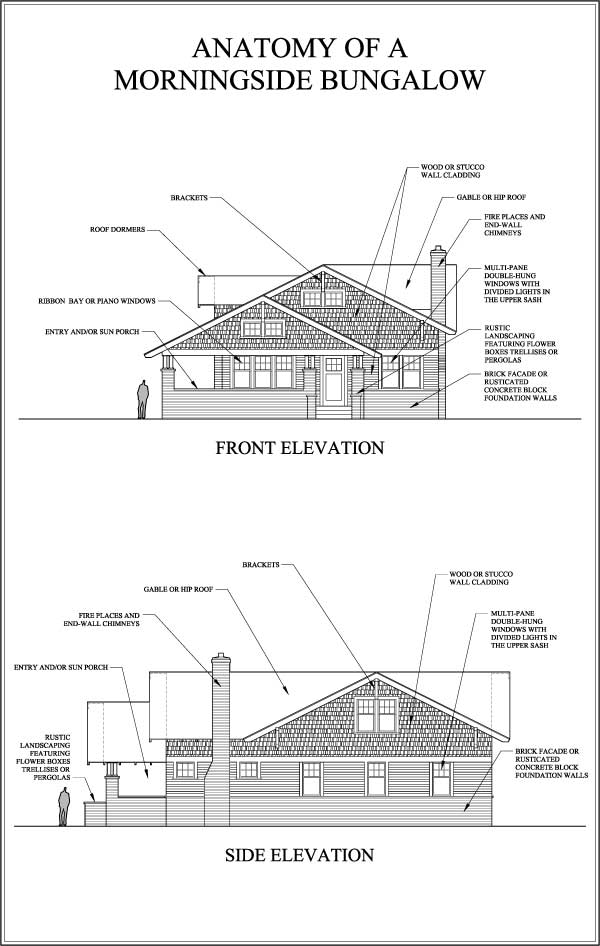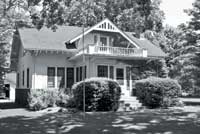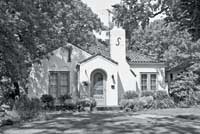Small Home Gazette, Fall 2013
Edina Offers Historic Designation to Bungalow Owners
In the Summer 2009 issue of this newsletter (“Edina Moves to Protect Its Bungalows”), we reported on a novel plan by the City of Edina to invite homeowners within the Morningside neighborhood to obtain Edina Heritage Landmark Designation for their bungalows. Instead of designating an entire area as an historic district—as with the city’s 14-block Edina Country Club District—the idea was to allow individual homeowners to seek designation for their property.
According to Edina’s preservation consultant, Robert Vogel, owner consent for landmark designation is a keystone of city policy and getting an entire district designated as historic can be tricky. “The standard practice is to draw a large polygon on a map and trap hundreds of properties within the boundary,” says Vogel. “Then you try to get 51 percent of the homeowners to say yes to historic designation. Instead, we like to see the heritage landmark designation as an empowering thing, something the city does for the people who live there, not to them,” he says. “We’re willing to go with the willing.”
Eligible Bungalows Identified

Edina conducted a study in 2010 to accomplish three things: define and describe Morningside’s bungalows, provide a history of the development of the neighborhood, and set up procedures for designating bungalows as Edina Heritage Landmarks. The study identified approximately 150 bungalows as possible candidates, and in early 2011, the city sent information about the project and invitations to register to the homeowners whose bungalows may qualify. Surprisingly, nearly three years later, no homes have been designated. Why?
There may be many reasons, according to Joyce Repya, a senior planner for the City of Edina. Chief among them may be the recent housing market crash. “I think people are just wary,” says Repya. “It’s a sign of the times. People want to protect their investment.” Some people are afraid, she says, that if they encumber their home with historic designation, that it will make their house less marketable. And unlike old buildings rehabbed for commercial purposes, there are currently no tax credits for historically designated homes.
Repya says that several Morningside homeowners have indicated that they’re interested, but none wants to be the first.
Historic Designation—Benefit or Liability?
 Does historic designation result in lower resale value? While data on individually designated homes is hard to come by, research on historic districts is pretty clear: It increases the homes’ values. Economist Donovan Rypkema writes, “The results of these studies are remarkably consistent: Property values in local historic districts appreciate significantly faster than the market as a whole in the vast majority of cases and appreciate at rates equivalent to the market in the worst case.” Studies conducted before and after the housing crisis have reached the same conclusion. And, says Edina preservation consultant Robert Vogel, “I think it’s even more valuable in keeping property values from declining rapidly.”
Does historic designation result in lower resale value? While data on individually designated homes is hard to come by, research on historic districts is pretty clear: It increases the homes’ values. Economist Donovan Rypkema writes, “The results of these studies are remarkably consistent: Property values in local historic districts appreciate significantly faster than the market as a whole in the vast majority of cases and appreciate at rates equivalent to the market in the worst case.” Studies conducted before and after the housing crisis have reached the same conclusion. And, says Edina preservation consultant Robert Vogel, “I think it’s even more valuable in keeping property values from declining rapidly.”
In the meantime, Repya isn’t fretting. “I’m not discouraged; we’ve done the groundwork,” she says. She points out that the neighborhood study and resulting publicity is helping to get the word out about Edina’s bungalows and bungalows in general, a goal shared by the Twin Cities Bungalow Club. “We’re recognizing homes that are significant, even if they aren’t registered,” she says.
Misperceptions
 Repya also wants to educate the public about what Edina Landmark Designation means, and what it doesn’t. As with virtually all historically designated private homes, changes to the interior are not restricted in any way. While homeowners must request a certificate of appropriateness for changes to the exterior or for new construction, restrictions are generally limited to the front-facing elements of the property. “If someone wanted to replace or rebuild a garage, they could do that,” says Repya. “We just want to review what they are replacing it with to make sure it is appropriate for the house.”
Repya also wants to educate the public about what Edina Landmark Designation means, and what it doesn’t. As with virtually all historically designated private homes, changes to the interior are not restricted in any way. While homeowners must request a certificate of appropriateness for changes to the exterior or for new construction, restrictions are generally limited to the front-facing elements of the property. “If someone wanted to replace or rebuild a garage, they could do that,” says Repya. “We just want to review what they are replacing it with to make sure it is appropriate for the house.”
In setting up Landmark Designation, the city will work with the homeowner to fashion a plan of treatment for each home. “We allow for the priorities of the homeowner,” says Repya.
See for Yourself
If you’re curious about the Morningside Neighborhood’s bungalows and the Edina Landmark Designation project, you’ll find plenty of information on the city’s website. You can download a copy of the study, which, besides providing ample information on bungalows, also contains a fascinating history of the neighborhood and how the arrival of streetcars allowed this suburb to grow. You can also download a four-page bulletin that summarizes the project and describes the neighborhood’s five bungalow types.
Finally, on the same website, you can download “The Morningside Bungalow Walking Tour,” which includes a list of 135 addresses of bungalows and a map showing their location. Sounds like a delightful way to spend a crisp fall afternoon.











